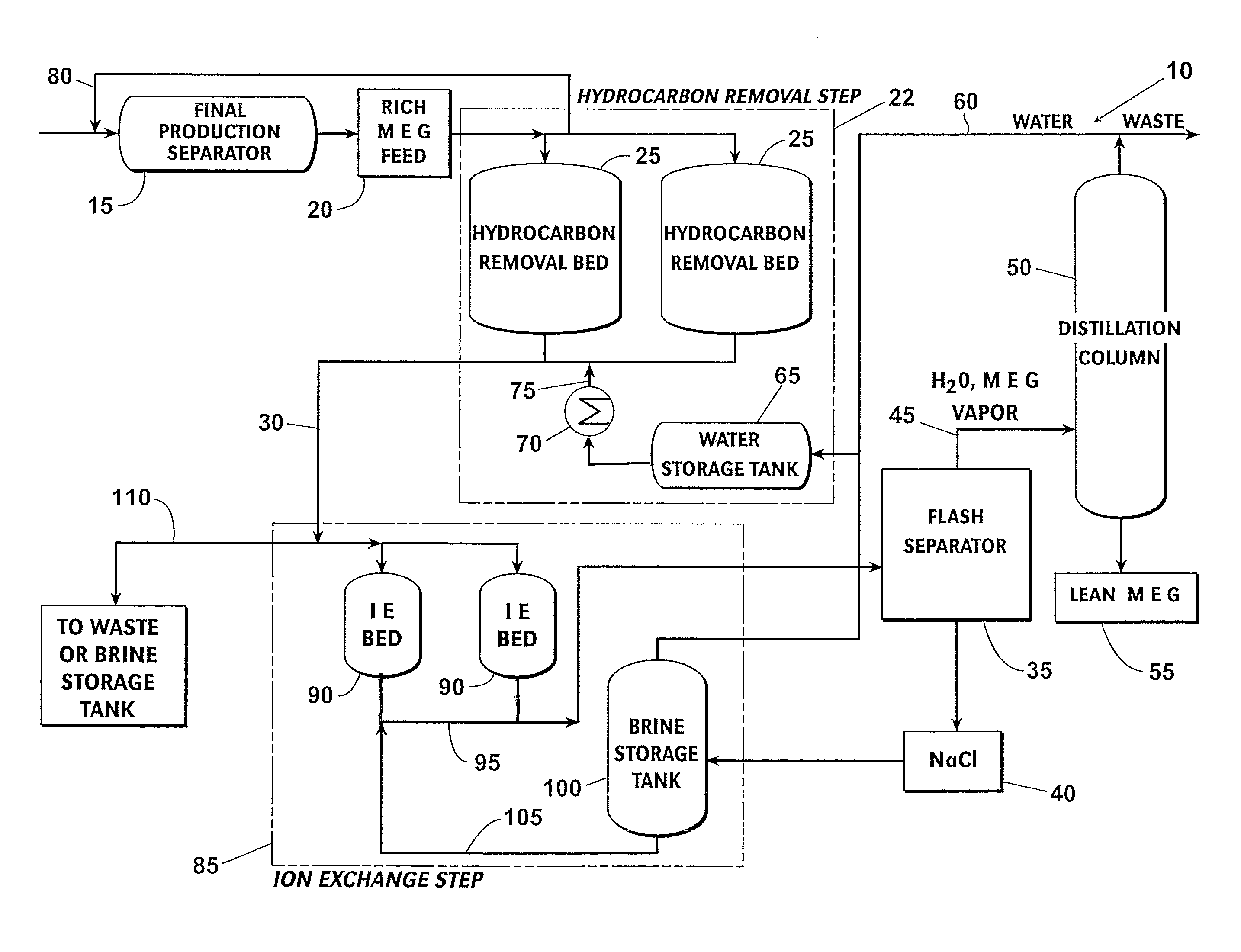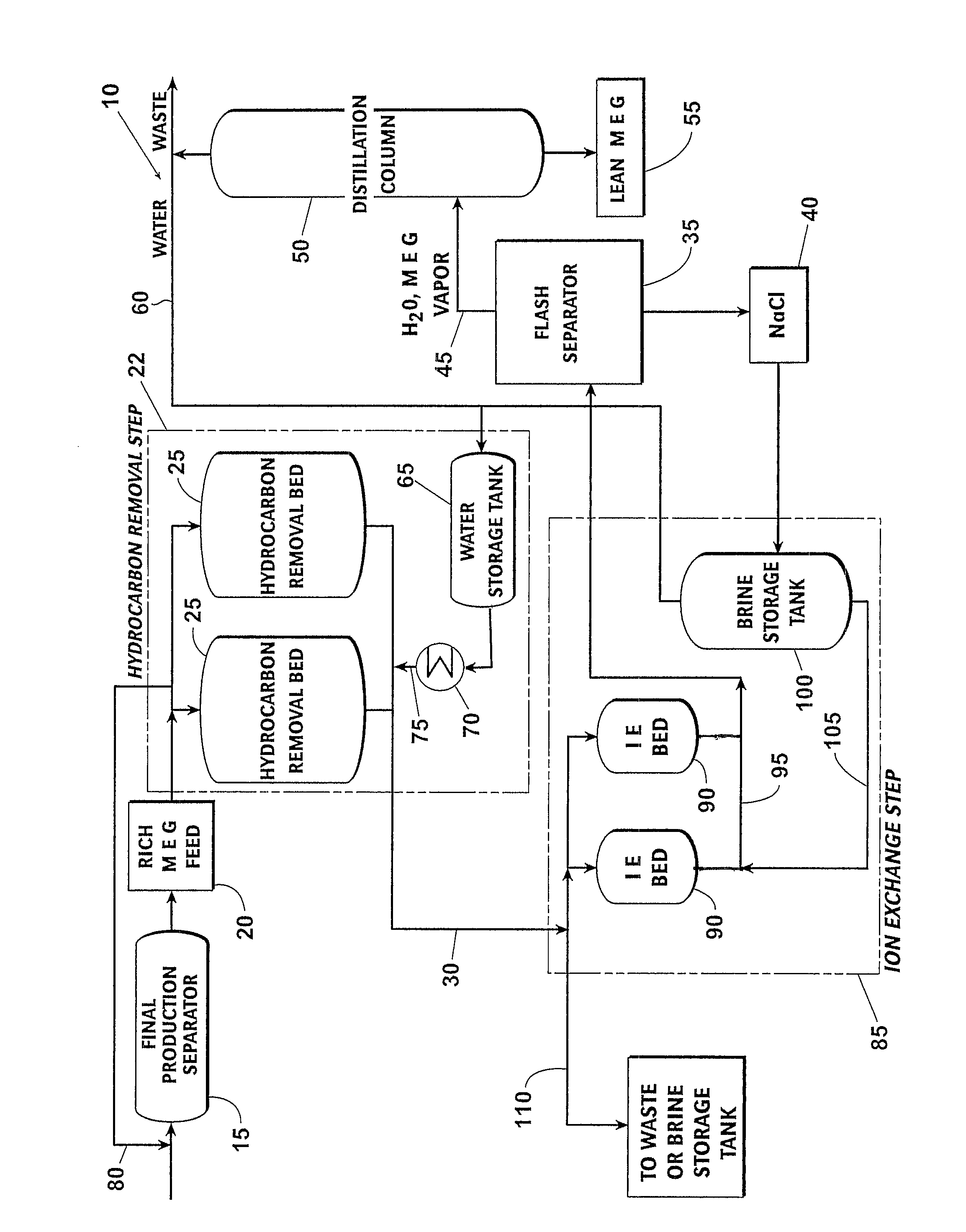Hydrocarbon and Divalent Cation Removal from Rich Mono ethylene Glycol (MEG) Feed Streams by Regenerable Filters
a monoethylene glycol and filter technology, applied in the direction of oxygen-containing compound preparation, multi-stage water/sewage treatment, separation process, etc., can solve the problem of increasing the abrasive nature of rich meg, reducing the settling of salt crystals, and excessive concentrations for optimal operation of the meg reclamation process. , to achieve the effect of reducing the volume, footprint and cost of processing equipment, facilitating the disposal of waste streams, and simplifying the hydrocarbon and divalen
- Summary
- Abstract
- Description
- Claims
- Application Information
AI Technical Summary
Benefits of technology
Problems solved by technology
Method used
Image
Examples
Embodiment Construction
[0035]In order to maximize the recovery of lean MEG, both hydrocarbons and divalent cations should be removed from the rich MEG feed stream before the MEG reclamation process begins. Because hydrocarbons in the feed stream may interfere with the ion exchange process by coating the ion exchange resin, the hydrocarbon removal step generally occurs before the ion exchange step.
[0036]As shown in the FIGURE, a preferred embodiment of a hydrocarbon and divalent cation removal process 10 practiced according to this invention begins with the final production separator 15, which produces a mixture of produced water and MEG commonly referred to as rich MEG. The rich MEG feed stream 20 is routed to a hydrocarbon removal step 22 comprised of dual hydrocarbon removal beds 25 which contain solid adsorbent material and alternate between adsorption and regeneration phases. Suitable adsorbent materials include, but are not limited to, DOWEX OPTIPORE® (Dow Chemical Co., Midland, Mich.). In the adsorp...
PUM
| Property | Measurement | Unit |
|---|---|---|
| Pressure | aaaaa | aaaaa |
Abstract
Description
Claims
Application Information
 Login to View More
Login to View More - R&D
- Intellectual Property
- Life Sciences
- Materials
- Tech Scout
- Unparalleled Data Quality
- Higher Quality Content
- 60% Fewer Hallucinations
Browse by: Latest US Patents, China's latest patents, Technical Efficacy Thesaurus, Application Domain, Technology Topic, Popular Technical Reports.
© 2025 PatSnap. All rights reserved.Legal|Privacy policy|Modern Slavery Act Transparency Statement|Sitemap|About US| Contact US: help@patsnap.com


